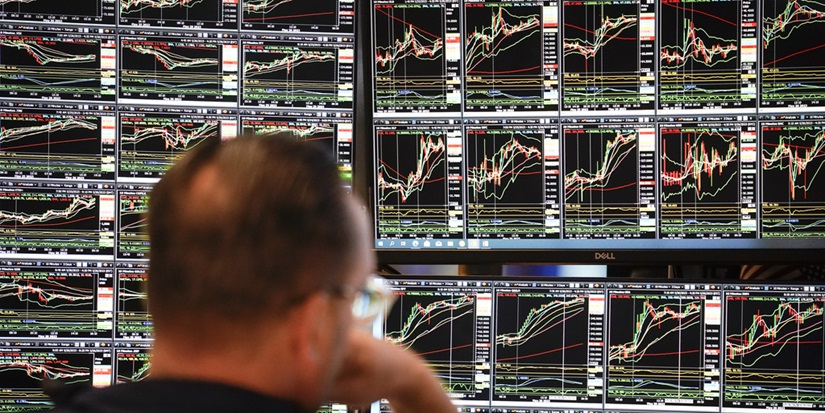
25th Hour
-
 Jared Dillian
Jared Dillian
- |
- November 16, 2023
- |
- Comments
A movie that I’m quite fond of is 25th Hour, a Spike Lee joint about three friends in post-9/11 New York City. One of them, played by Barry Pepper, is a bond trader. There is a scene with him on the trading floor, where he’s long a bunch of Treasury bonds in front of a payroll number, and his boss comes over and tells him that he’s above his risk limits and to close out the trade.
He doesn’t. It’s a big miss on payrolls, a huge rally in bonds, and Barry Pepper walks off a hero and goes to the club that night.
I just had one of those days.
Quite a day on Tuesday with the CPI number. I want to talk a bit about regimes...
For most of this year, we were in a strong USD/high-interest rates/long large-cap tech regime. That all changed on Tuesday. Rates were down at least 20 basis points across the curve, and the S&P 500 was up 2%. But the Russell 2000 was up 5%, and the dollar took a dirtnap. There are so few clear examples of regime change in the business. From here on out, dips in bonds will be bought, and rallies in the dollar will be sold. And small caps will outperform large caps for the foreseeable future.
|
Our partner Stephen McBride from RiskHedge Research is stepping forward with hard facts and well-researched stock picks to help you ride the AI revolution. He’s hosting an online event called the Trillion Dollar A.I. Investment Portfolio. |
I didn’t exactly predict it, but I’ve been leaning in that direction for a while, under the theory of “that which is unsustainable cannot be sustained.” I’m referring to the “higher for longer” trade, which turned into a minor cult comprised of a group of people who thought that rates would stay high forever and go higher.
Well, nothing goes on forever in the markets. Sometimes, it seems like it does, but inevitably, the trend will come to an end. There is an old saying that the trend is your friend. I find this not to be the case for me. By the time I identify a trend, it is pretty close to the end. The trend is your friend if you have an exceptional entry point. So, it is really about getting an exceptional entry point.
How to Get an Exceptional Entry Point
Sentiment, my friends. Sentiment.
There were some loud and annoying bond bears in the last few months. I heard calls for 6%, 7%, 8% yields on 10-year notes and beyond. People are always attracted to the doomsday trade in markets. It is like flypaper for idiots.
Don’t get me wrong: We will one day have doomsday in the bond market because of an inability to contain the federal deficit. But maybe we won’t! Maybe we’ll elect a sane centrist deficit hawk and reduce the deficit to 1% or 2% of GDP. We certainly aren’t tracking in that direction, but it is possible.
In The Daily Dirtnap, I have written about the concept of deus ex machina many times. Sometimes, things magically get better, and everyone gets bailed out. Sometimes, we pull back from the brink. Sometimes, Americans do the right thing after exhausting all other possibilities. Sometimes, demand rises to meet supply. And sometimes, the markets do what you least expect. Happens all the time.
So, anyway, how to get an exceptional entry point…
Tuesday, I did a podcast with the great and erudite value manager Tobias Carlisle. He asked me, “How do you identify a potential trade?”
I said, “When the noise around something picks up to deafening levels.” It is usually the thing that everyone is fighting over. Right now, we are fighting about bonds. In the past, we have fought about bitcoin and stocks. Not too long ago, we were fighting about ESG. Funny about ESG—right when everyone was pissed off about it, it started to underperform. Now, nobody wants it. It won’t exist in five years.
The New Trend
Like what you're reading?
Get this free newsletter in your inbox every Thursday! Read our privacy policy here.
4%?
3.5%?
3%?
I don’t know, but here is my answer: probably further than you think.
Part of being a good investor is having the ability to see possibilities, to consider the entire probability distribution. Most people truncate it and say, “No, that isn’t possible. There is NO WAY that rates will go down to 3%.” That’s why the late Byron Wien came up with his list of surprises every year. A lot of people got that wrong and confused them with predictions—they weren’t predictions to get all. He was trying to get people to think of what was possible. A very 10th Man thing to do.
I have been writing The 10th Man for nine years, and that is always what I’ve tried to do: to get people to think outside the box. I hope I have been successful.
No Worries
A very 10th Man sort of book is No Worries: How to Live a Stress-Free Financial Life. Completely outside the consensus of what constitutes personal finance advice. Sure to knock your socks off.
If you preorder a copy, Mauldin Economics will send you a trademarked No Worries Speedo that you can wear at the neighborhood pool in the summer.
No, we won’t. But you should order it anyway:

Jared Dillian, MFA
subscribers@mauldineconomics.com

 Jared Dillian
Jared Dillian